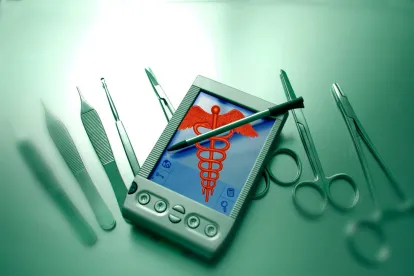It has been fairly quiet since the political agreement was reached last June on the EU Medical Devices Regulation (“the Regulation”). While the Commission’s lawyer-linguists iron out the final language, paving the way for formal adoption in the coming months, we are preparing a series of articles, beginning with this article, to address key aspects of the Regulation.
Comprised of around 100 provisions and extensive annexes, the Regulation contains dozens of topics that medical device professionals should be aware of. Our Medical Devices Regulation series will focus on select issues that we consider particularly noteworthy from a legal perspective. We would expect these issues to include the following topics:
Transitional Periods
The Regulation will effectively apply three years after its entry into force. The practical impact of the transitional provisions, however, especially on products currently on the market, requires careful analysis.
Scope
The Regulation broadens the scope of the EU regulatory regime on medical devices. Certain devices of a “non-medical” nature will need to comply with the Regulation. In addition, a question arises as to what impact the Regulation has on the classification of so-called borderline products, namely products the regulatory qualification of which is not entirely clear. Relatedly, we recently published a blog post on the status of e-health and m-health software, accessible here.
Notified Bodies
Notified bodies are accredited entities that are responsible for assessing whether devices comply with the regulatory requirements. To date, there seems to be a consensus that these can remain private entities, albeit accredited by governmental authorities. Whether the Regulation changes this is not an easy question to answer. While the Regulation clearly increases the involvement of and imposes more stringent requirements on the notified bodies, their legal status remains unclear.
Transparency
To date, the European Medical Device Database (Eudamed) is not publicly accessible. Under the Regulation, however, parts of Eudamed will become searchable for the public. This may have an important impact on the industry, especially in relation to the clinical investigations that need to be conducted for certain devices. It remains uncertain whether the device sector will move towards greater transparency, possibly inspired by the European Medicines Agency’s policy on the publication of clinical trial data.
Traceability and Post-Market Oversight
The Regulation imposes the UDI (unique device identifier) requirements to increase traceability of devices. Linked to that, manufacturers and other device professionals will become subject to more stringent post-marketing obligations and oversight. The practical impact and complexity of these obligations should not be underestimated.
Liability of Authorized Representatives
Under the current wording of the Regulation, the authorized representatives — the legal representatives of non-EU manufacturers in the EU — “shall be legally liable for defective devices on the same basis as” and “jointly and severally with” the manufacturer. This is an important evolution, and warrants closer analysis.
Remaining Questions
Many of the details of the Regulation remain to be decided via so-called secondary legislation, either through delegated or implementing acts. The timely adoption of these acts is crucial to allow adequate preparation for the Regulation of all stakeholders involved. In our Medical Devices Regulation series, we will take a closer look at some of these outstanding measures.
Stay tuned for our upcoming posts.…




 />i
/>i

